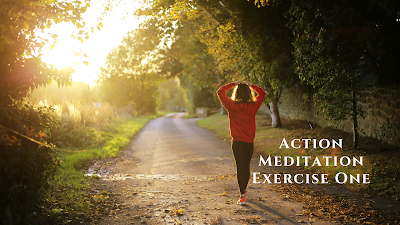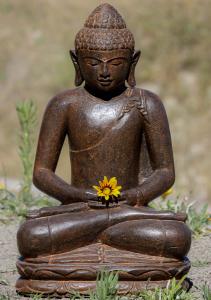 I receive a lot of questions on meditation. How do I meditate? Do I just sit in silence? Should I chant? Should I pray? Light incense? Empty my mind? The first step toward meditation practice can certainly be a difficult one without the proper guidance. We can fall prey to many pitfalls if we’re not guided properly. While you can learn some simply things from a book, the proper formation of your meditation practice and receiving feedback from a teacher qualified to be a guide really needs the direct input of another person. However, there is a form of meditation that you can certainly begin to explore that avoids all of the intricate issues that arise from what is commonly understood as meditation. I’m referring to what I call ‘Action Meditation’. Action Meditation is a valid form of meditation, but not one that requires the withdrawal of the senses from the input of the environment, but rather relies on sensory input for its benefits. It is a good method for beginners, who usually have lots of questions, and who generally aren’t ready for more complex forms of contemplative practice. It is a way of being more mindful than we were previous to taking up spiritual life. What follows is a first step in spiritual training. If you engage this exercise, do so with sincerity and determination to derive the fullest benefit.
I receive a lot of questions on meditation. How do I meditate? Do I just sit in silence? Should I chant? Should I pray? Light incense? Empty my mind? The first step toward meditation practice can certainly be a difficult one without the proper guidance. We can fall prey to many pitfalls if we’re not guided properly. While you can learn some simply things from a book, the proper formation of your meditation practice and receiving feedback from a teacher qualified to be a guide really needs the direct input of another person. However, there is a form of meditation that you can certainly begin to explore that avoids all of the intricate issues that arise from what is commonly understood as meditation. I’m referring to what I call ‘Action Meditation’. Action Meditation is a valid form of meditation, but not one that requires the withdrawal of the senses from the input of the environment, but rather relies on sensory input for its benefits. It is a good method for beginners, who usually have lots of questions, and who generally aren’t ready for more complex forms of contemplative practice. It is a way of being more mindful than we were previous to taking up spiritual life. What follows is a first step in spiritual training. If you engage this exercise, do so with sincerity and determination to derive the fullest benefit.
- You’re going to take a walk in a park that is situated fairly away from the hustle and bustle of the city. A place with low traffic is ideal. Dress comfortably for the weather and terrain. You don’t want to be too hot or too cold. No earbuds, no cell phone-in fact, no electronics whatsoever. When you arrive, it is best if you pray or chant as a preparation for the spiritual exercise ahead. You want to consecrate this walk as a sacred time, and not just an everyday walk. Wear no jewelry.
- Walk slowly, and as you do so you want to really focus on all of the sensory input you receive. Pay close attention to colors, the way light compliments natural features, shadows, textures, terrain under your feet, the wind, etc. The totality of sensory information is what you want to pay close attention to. How does the wind feel as it blows across your skin and through your hair? How does the various terrains feel under your feet? Try to notice as much detail as you can about everything around you.
- Pick up a leaf or pinecone and take a few minutes to closely examine it. Note the veins in the leaf, the patterns, the colors, how the leaf or pinecone feels in your hands and on your fingertips. Does it have a scent? Use the leaf or pinecone to gently brush your cheek. What sensory input does that provide? Is it different from that you experience in your fingers?
- Touch the ground with your palm. Feel the grass, the dirt underneath it. Notice the temperature changes, the difference in texture.
- Look up at the sky for a few moments. Pay close attention to the clouds and their movements, changes in shape, etc.
- Listen to the sounds of birds around you. If it helps to close your eyes (and it often does), do so, and listen carefully to the birds. How close or how far away are they? What different birdsongs can you discern?
The goal of this exercise is to begin to develop the ability to focus the mind and be fully present in the moment. Unfortunately, due to the fast pace of modern society we miss so much of what is going on around us, and much beauty. This Action Meditation exercise will help you develop the stillness necessary for more contemplative meditational practices and should be done for nine days. You can break up those nine days as a once each week practice, or you can do it daily for nine days for maximum effect.















